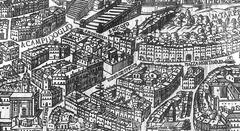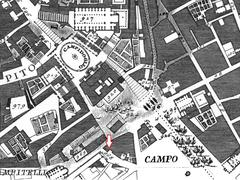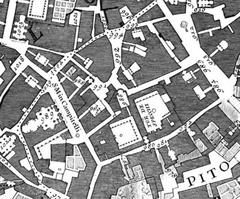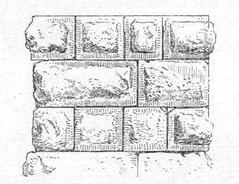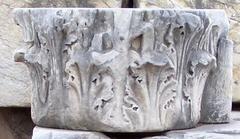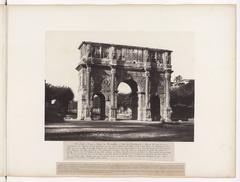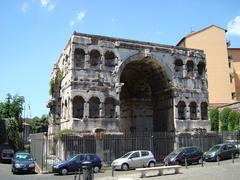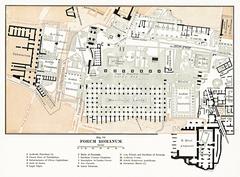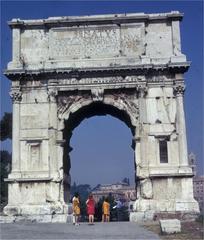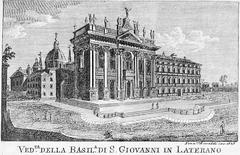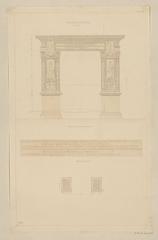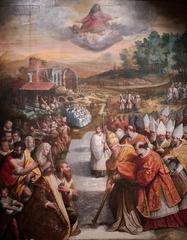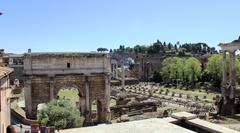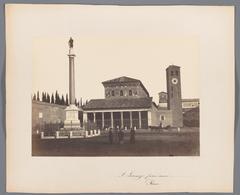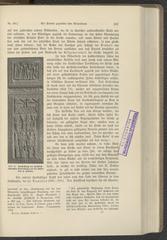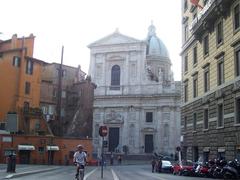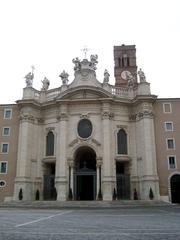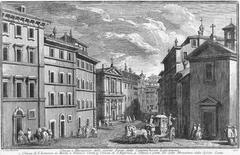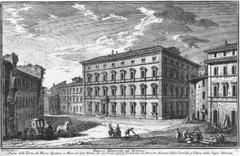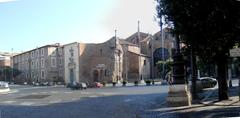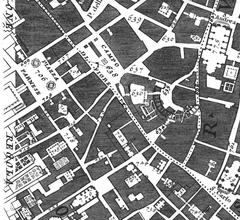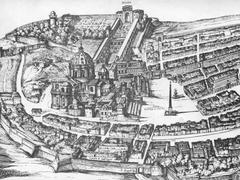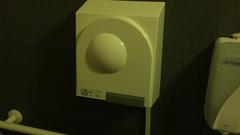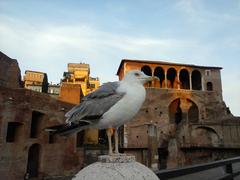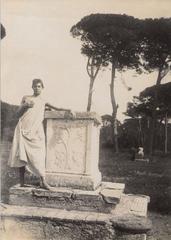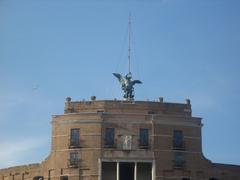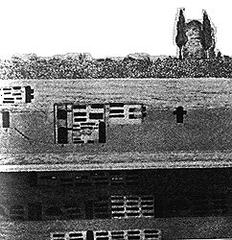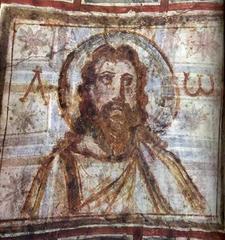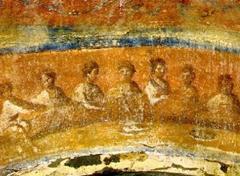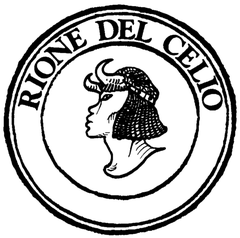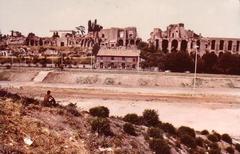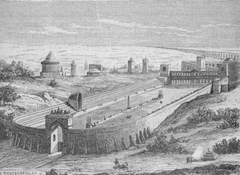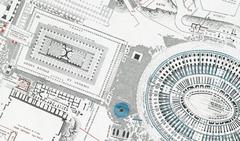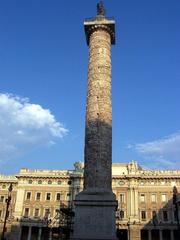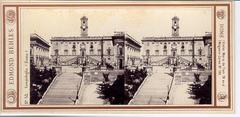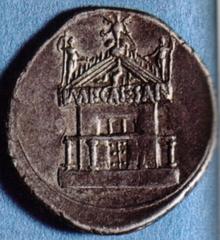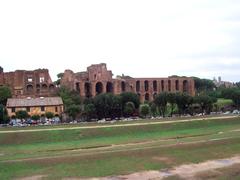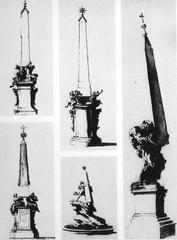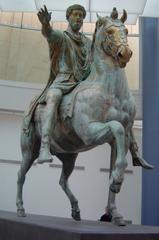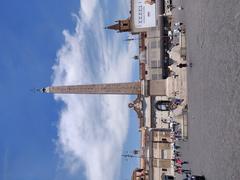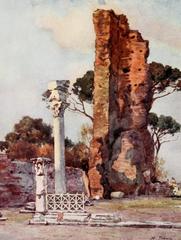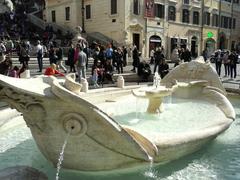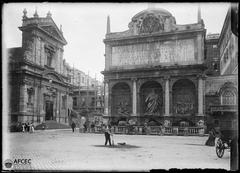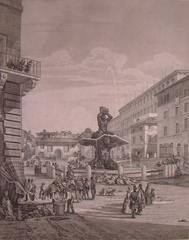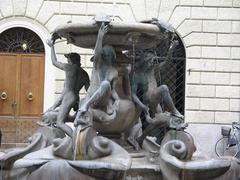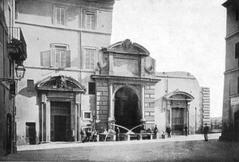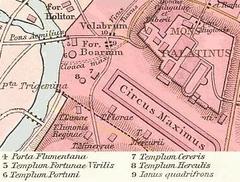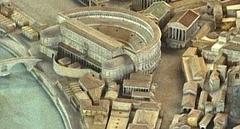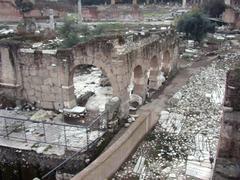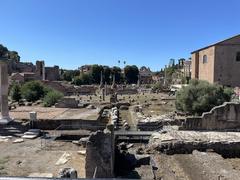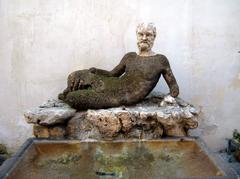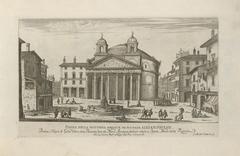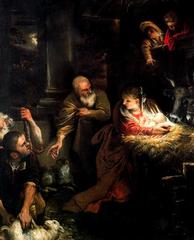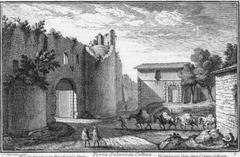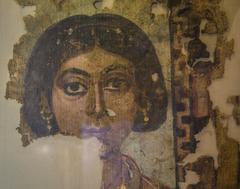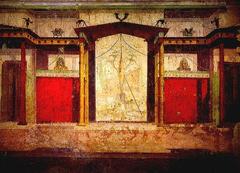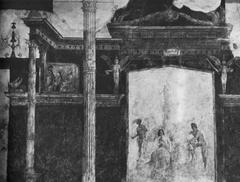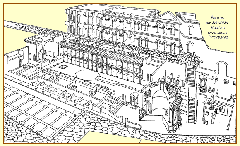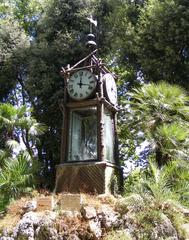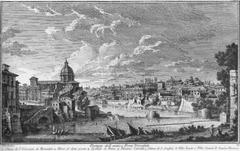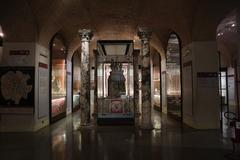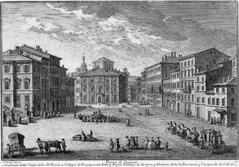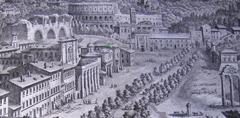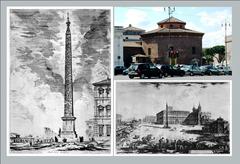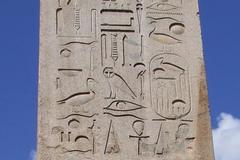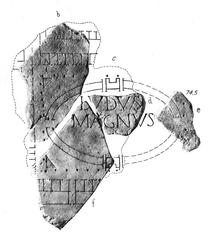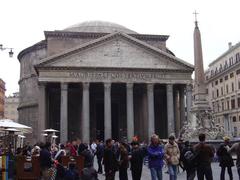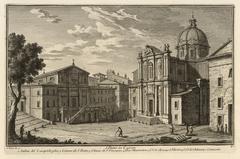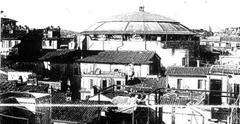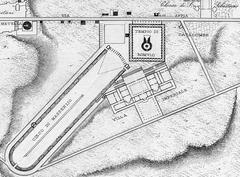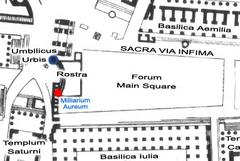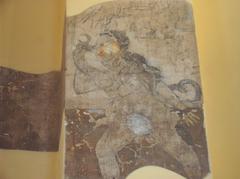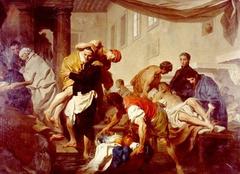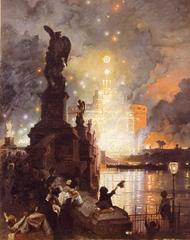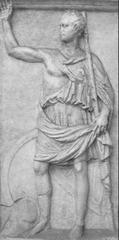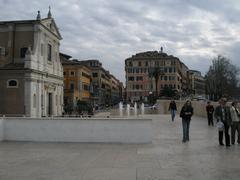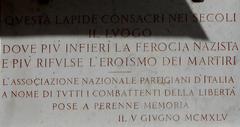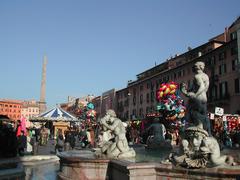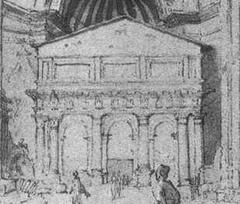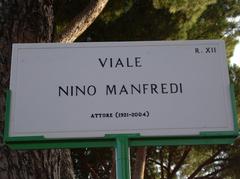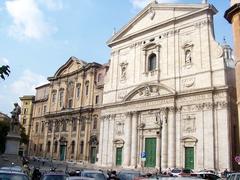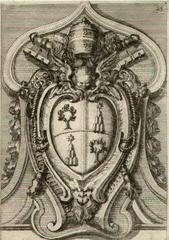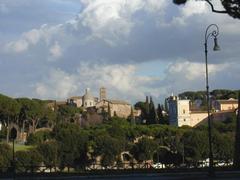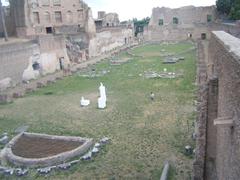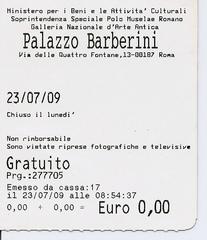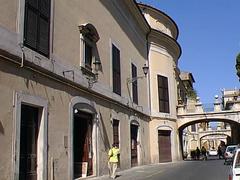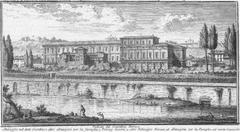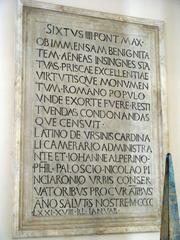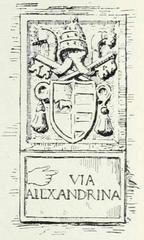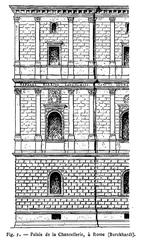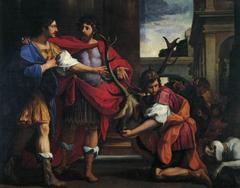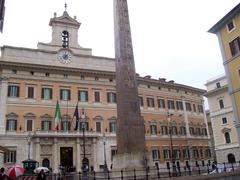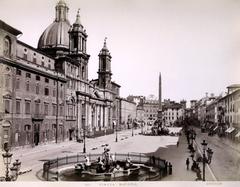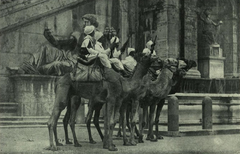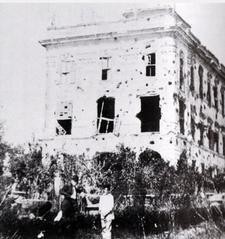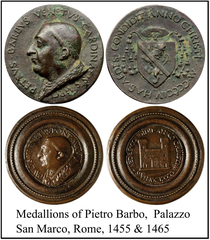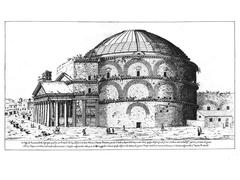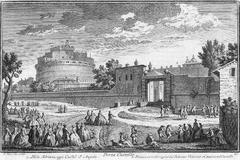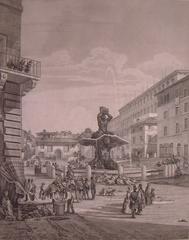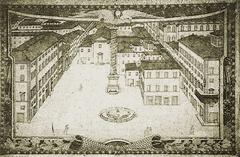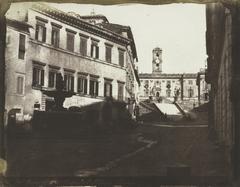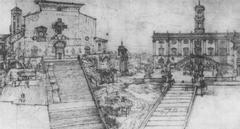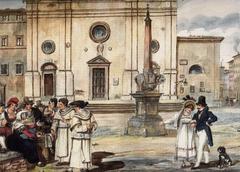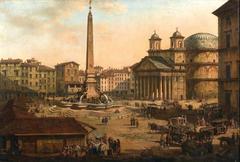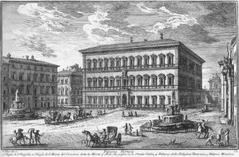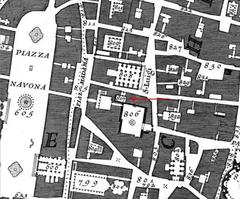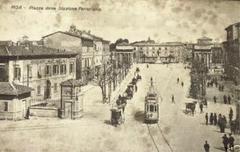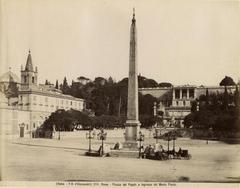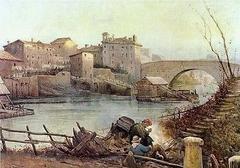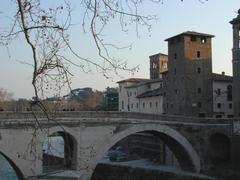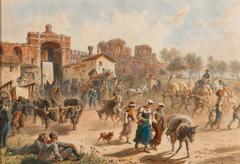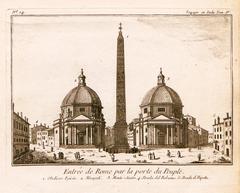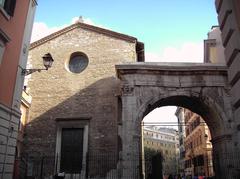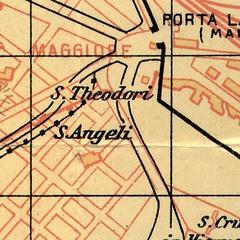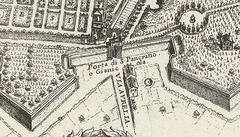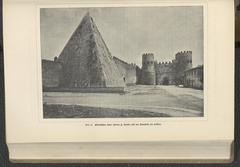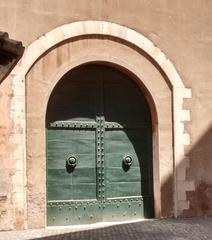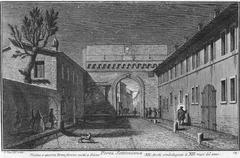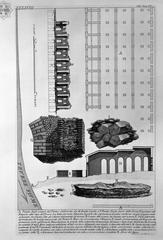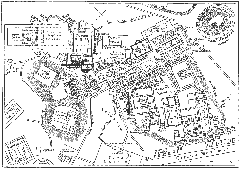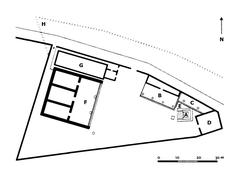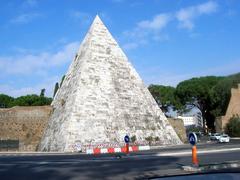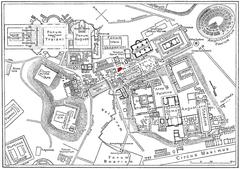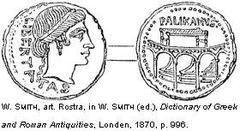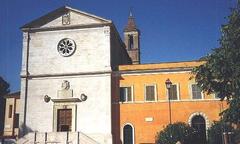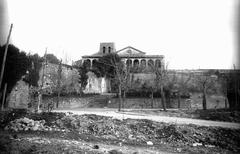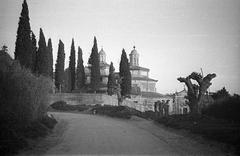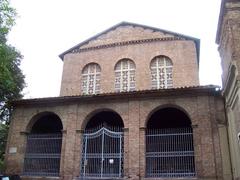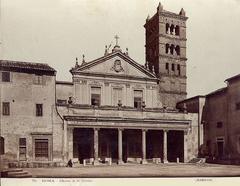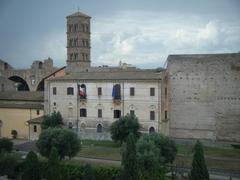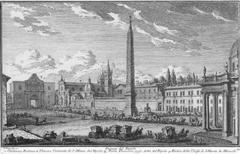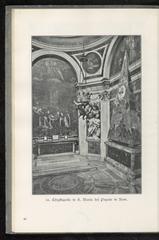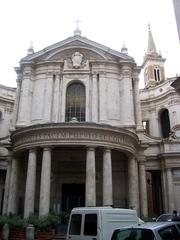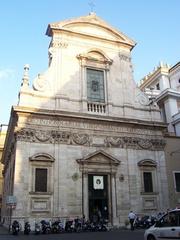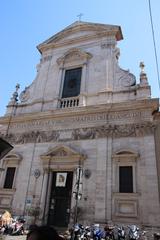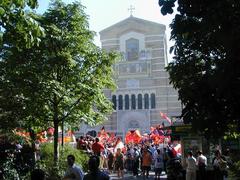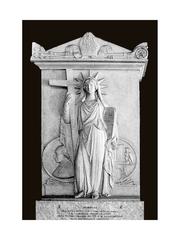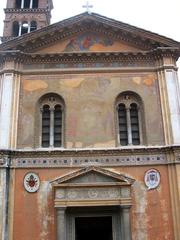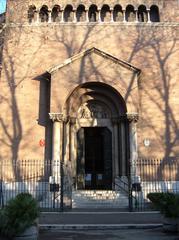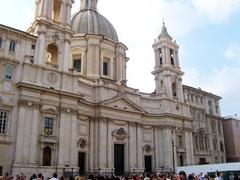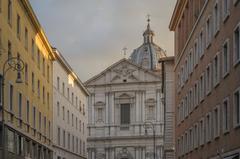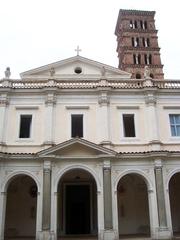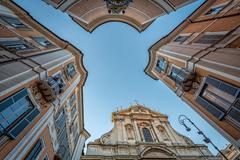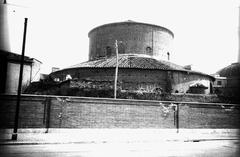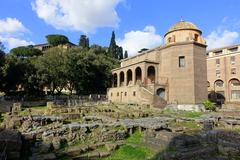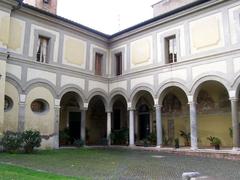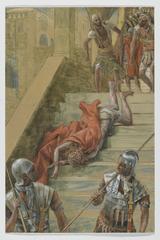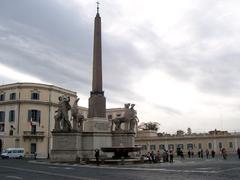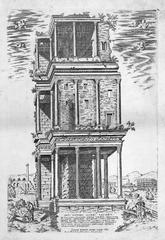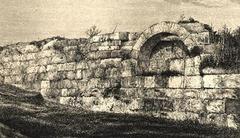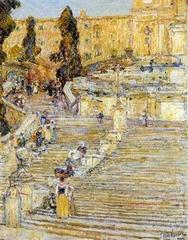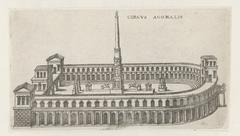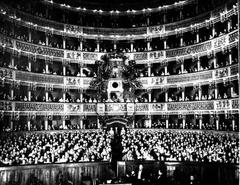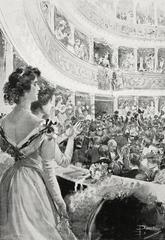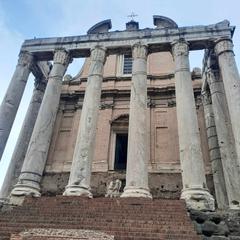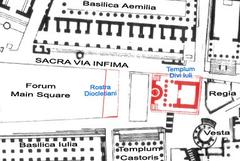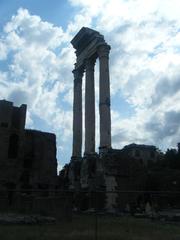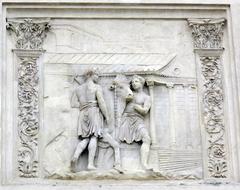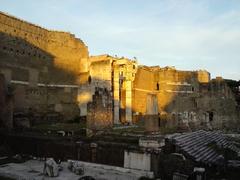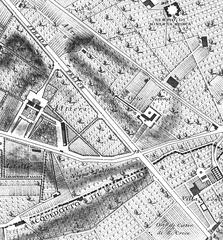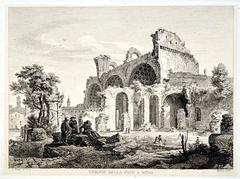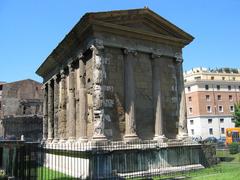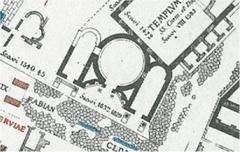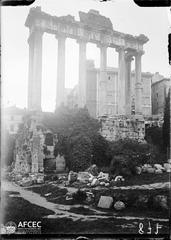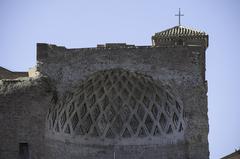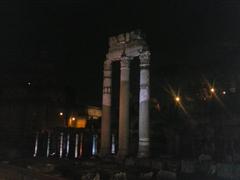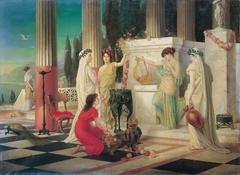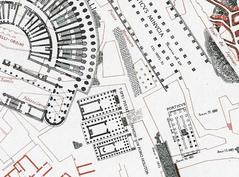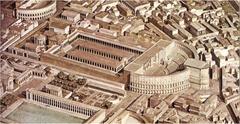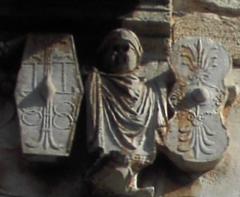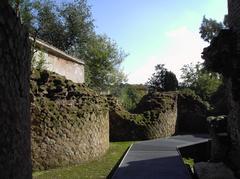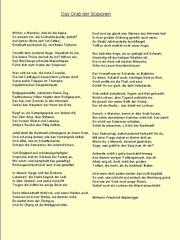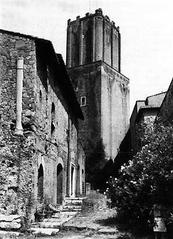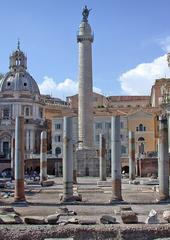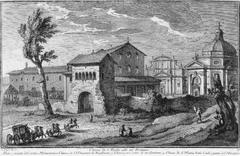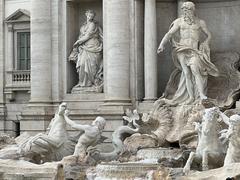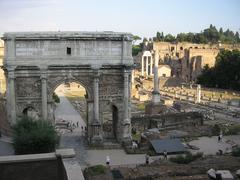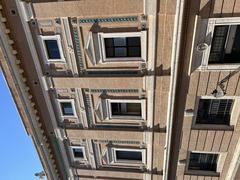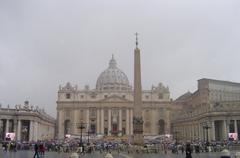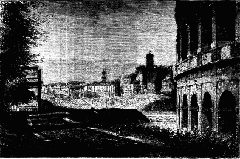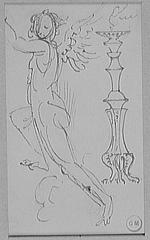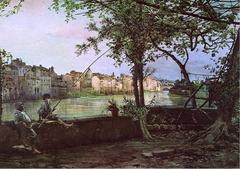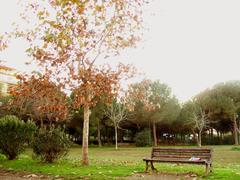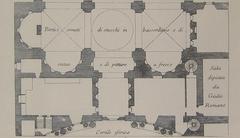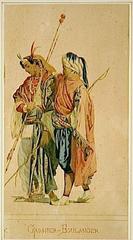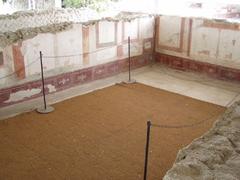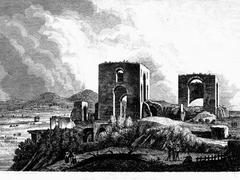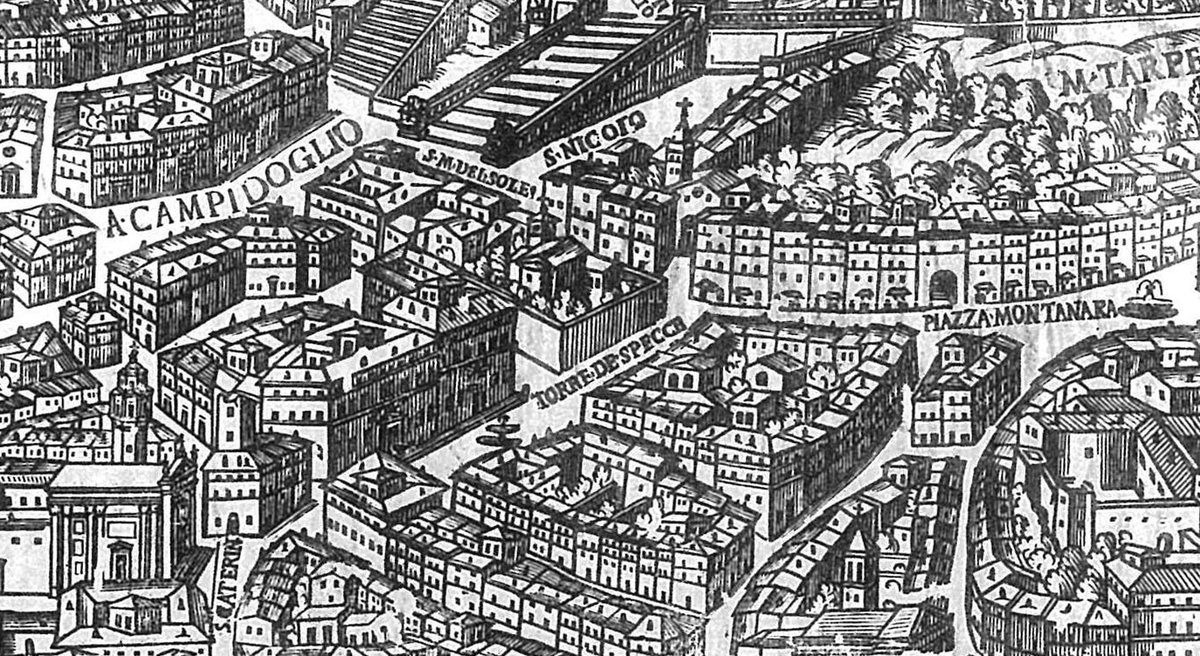
Visiting Scalinata dell’Ara Coeli: Hours, Tickets, and Tips
Date: 31/07/2024
Introduction
Nestled in the heart of Rome, the Scalinata dell’Ara Coeli, or Ara Coeli staircase, is a must-visit for history enthusiasts and travelers alike. Built in 1348 as an act of gratitude to the Virgin Mary for saving the city from the Black Death, this iconic staircase has a rich history intertwined with legends and cultural practices. The staircase, constructed from ancient buildings, possibly including the Temple of Serapis or the Temple of Sol Invictus, has been a focal point for various historical events and local traditions (Corvinus, Rome.us). Visitors are drawn not just by its historical significance but also by the spiritual practices associated with it, such as the tradition of climbing the 124 steps on one’s knees while reciting prayers, believed to grant special blessings. This guide provides a comprehensive overview of everything you need to know about visiting the Scalinata dell’Ara Coeli, from its fascinating history to practical visitor information, including visiting hours, ticket prices, and travel tips.
Table of Contents
- Introduction
- History of Scalinata dell’Ara Coeli
- Visitor Information
- Travel Tips
- Nearby Attractions
- Conclusion
- FAQ
History of Scalinata dell’Ara Coeli
Origins and Construction
The staircase was constructed in 1348 as an act of gratitude to the Virgin Mary for saving the city from the Black Death. The driving force behind this project was Cola di Rienzo, a self-declared Roman tribune. The steps were sourced from ancient buildings, with some sources mentioning the Temple of Serapis or the Temple of Sol Invictus erected by Aurelianus (Corvinus).
Historical Significance
The staircase has been a focal point for various historical events and legends. During the Middle Ages, it was a place where condemned criminals were executed. Notably, Cola di Rienzo himself met his death near the staircase in 1354, and a statue commemorates him in the garden between the Scalinata dell’Ara Coeli and the Cordonata (Rome.us).
Religious and Cultural Practices
According to legend, climbing the 124 steps on one’s knees while reciting prayers can grant special blessings. This practice remains a part of local tradition and attracts visitors from around the world.
Visitor Information
Tickets and Opening Hours
- Opening Hours: The Scalinata dell’Ara Coeli is open daily from 7:00 AM to 7:00 PM.
- Tickets: There is no entry fee to visit the staircase itself. However, if you wish to visit the nearby Basilica di Santa Maria in Ara Coeli, donations are appreciated.
Accessibility
The staircase is quite steep and may not be suitable for visitors with mobility issues. There are alternative routes and entrances to the Basilica for those who require them.
Travel Tips
Best Time to Visit
Early mornings or late afternoons are ideal to avoid crowds and enjoy a peaceful experience.
What to Wear
Comfortable shoes are a must due to the steep steps and uneven surfaces.
Photography
The views from the top of the staircase are stunning. Don’t forget your camera!
Nearby Attractions
Capitoline Hill
Just a short walk away, offering panoramic views of Rome.
Roman Forum
Explore ancient ruins and immerse yourself in Roman history.
Piazza Venezia
A bustling square with impressive architecture and monuments.
Conclusion
The Scalinata dell’Ara Coeli is not just a staircase; it’s a journey through Rome’s rich history and culture. Whether you’re a history buff, a spiritual seeker, or simply a curious traveler, this site offers something for everyone. Plan your visit today and step into a piece of Rome’s past.
Call to Action
Ready to explore more of Rome’s historical sites? Download the Audiala app for personalized travel guides, follow us on social media for the latest updates, and check out our other posts for more travel tips and recommendations.
FAQ
Q: How many steps are there in the Scalinata dell’Ara Coeli? A: There are 124 steps in the staircase.
Q: Is there an entry fee to visit the staircase? A: No, visiting the staircase is free of charge.
Q: What are the opening hours? A: The staircase is open daily from 7:00 AM to 7:00 PM.
Q: Are there any nearby attractions? A: Yes, Capitoline Hill, Roman Forum, and Piazza Venezia are all nearby attractions worth visiting.
Exploring the Legends and Traditions of Scalinata dell’Ara Coeli in Rome
The Tiburtine Sybil and Augustus
One of the most enduring legends associated with the Basilica of Santa Maria in Ara Coeli, accessible via the Scalinata dell’Ara Coeli, involves the Tiburtine Sybil and the Roman Emperor Augustus. According to the Mirabilia Urbis Romae, a 12th-century medieval guide to Rome, the prophetess Tiburtine Sybil foretold to Augustus that the savior of humanity would soon come to earth. She prophesied that an altar to the Son of God would be erected at this location, saying, “Haec est ara Filii Dei” (Magnus Institute). While this story is likely legendary, it underscores the site’s long-standing spiritual significance.
Juno Moneta and the Sacred Geese
In the early Republican period, the hill where the Basilica now stands was associated with the worship of the goddess Juno. A temple dedicated to Juno Moneta, “she who warns,” was situated here. According to legend, sacred geese kept at the temple warned the Romans of an impending attack by the Gauls with their loud honking, thus saving the city from destruction (Magnus Institute). This episode not only highlights the hill’s ancient religious significance but also explains the origin of the term “moneta,” which later became associated with the minting of currency.
The Holy Child of Ara Coeli
The wooden statue of the Holy Child of Ara Coeli, known as “il Santo Bambino” or “er Pupone” in Roman vernacular, is a focal point of devotion at the Basilica. Carved in the 15th century from olive wood taken from the Garden of Gethsemane in Jerusalem, the statue has a storied history. It was stolen by Napoleon’s soldiers in 1797 but was later recovered. Devotion to the statue increased in the early 19th century after a child from the Torlonia princely family allegedly recovered from a severe illness when the statue was brought to his bedside (Magnus Institute).
Advent and Christmas Traditions
Despite modern secularization, devotion to the Holy Child remains strong, especially during Advent and the Christmas period. Children visit the statue, placed in the church’s nativity scene, to recite poems and ask for particular graces. According to local belief, if their requests are to be granted, the statue’s lips will turn red; if not, they will remain white (Magnus Institute). This tradition continues to attract numerous visitors, particularly during the Christmas season.
The Stairs of Devotion
The Scalinata dell’Ara Coeli, consisting of 124 steps, was built in 1348 by popular demand as thanks for the end of a plague. According to tradition, Cola di Rienzo was the first to climb these steps (060608). In the 17th century, foreigners used to sleep on the steps until Prince Caffarelli chased them away by rolling barrels full of stones up them. Historically, the stairs were also climbed at night on one’s knees while reciting prayers to the three kings—Gasparre, Baldassarre, and Melchiorre—to obtain winning numbers in the Lotto game (060608).
The Anti-Clerical Revolutionaries
In 1848, anti-clerical revolutionaries threatened to destroy the statue of the Holy Child. The Franciscans smuggled it to safety, further increasing its veneration. Pope Leo XIII formally recognized the devotion to the statue in 1894, and it was crowned in 1897. For decades, until the Second Vatican Council, the statue was taken out to the entrance of the church on the day of the Epiphany to bless the city of Rome (Magnus Institute).
The Theft of 1994
On February 1, 1994, two thieves masquerading as construction workers stole the statue of the Holy Child. A copy was soon placed in the side chapel where the original had been kept, but the original has never been recovered. Interestingly, the inmates of Rome’s notorious prison, Regina Coeli, issued an appeal asking the thieves to return the statue (Magnus Institute).
The Ara Coeli Insula
Located on the slopes of the Capitoline Hill, the Ara Coeli Insula is an ancient Roman block of buildings dating back to the second century AD. This insula represents an important example of Roman domestic architecture, distinct from the upper-class domus. The insula housed numerous families, with the ground floor containing “tabernae” (shops) and the upper floors consisting of small, cramped apartments rented out to families with limited economic means (Turismo Roma).
Visitor Tips
For those planning to visit, it’s essential to note that admission to the monument is allowed to groups and associations with their own guide, who must make a reservation at 060608. Individual visitors must also make a reservation according to a specified schedule (Turismo Roma). The site is temporarily closed to the public starting from August 1, 2024, for planned works (Turismo Roma).
Frequently Asked Questions (FAQ)
What are the visiting hours for Scalinata dell’Ara Coeli? Visiting hours for the Scalinata dell’Ara Coeli vary; it is recommended to check the latest schedule and make a reservation in advance.
How much are tickets for Scalinata dell’Ara Coeli? Admission prices can vary. It is best to consult the official site for the most current information on ticket prices.
Are there guided tours available? Yes, guided tours are available for groups and associations, but reservations are needed.
What are some nearby attractions? Nearby attractions include the Roman Forum, the Capitoline Museums, and the Colosseum.
Is the site accessible to individuals with disabilities? Accessibility may be limited due to the historic nature of the stairs and building. It’s recommended to check with the site for specific accessibility options.
Conclusion
The Scalinata dell’Ara Coeli and the Basilica of Santa Maria in Ara Coeli are steeped in legends and traditions that span centuries. From ancient Roman deities to Christian relics, the site offers a rich tapestry of historical and cultural narratives that continue to captivate visitors. Whether you’re drawn by the legends of the Tiburtine Sybil, the sacred geese, or the enduring devotion to the Holy Child, a visit to this iconic Roman landmark promises a memorable experience.
Call to Action
For more updates and travel tips, download our mobile app Audiala, check out our other related posts, or follow us on social media. Make sure to stay updated with the latest information on visiting hours, ticket prices, and special events.
References
- Corvinus (2017) Rome Santa Maria in Aracoeli
- Rome.us (n.d.) Santa Maria in Ara Coeli
- Magnus Institute (n.d.) The Statue of the Holy Child of Ara Coeli: An Immemorial Roman Tradition
- 060608 (n.d.) Scalinata dell’Ara Coeli
- Turismo Roma (n.d.) Ara Coeli Insula
- Turismo Roma (n.d.) Basilica Santa Maria Aracoeli
- Lonely Planet (n.d.) Things to know before traveling to Rome
